Few have heard of such an exotic currency as the Ural francs. Nevertheless, in the early 90s of the last century, banknotes were printed, and even permission was received from the government of the Russian Federation to introduce them into circulation. Let's find out what the Ural francs are. The history of the emergence of this currency, as well as its further fate, will be devoted to this review.
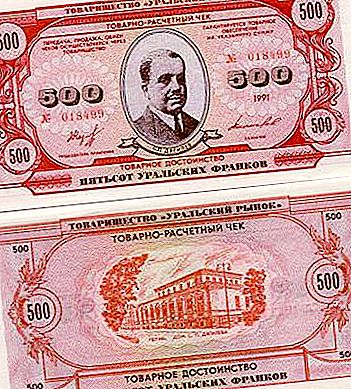
Reasons for introducing a regional currency
First of all, we will find out for what reasons the idea came out to issue the Ural francs. After the collapse of the USSR, the Russian economy was in a rather poor state. This was due both to the loss of economic ties with other former republics, and to the breakdown of an obsolete system. There was such a phenomenon as a fairly high inflation rate, but at the same time combined with a shortage of money supply in the country.
It is this state of affairs in the minds of some people that gave rise to the idea of issuing a private currency that would be in circulation in parallel with the ruble. This would solve the problem of shortage of money supply. In addition, at that time, there was no law in Russian law expressly prohibiting such a financial experiment.
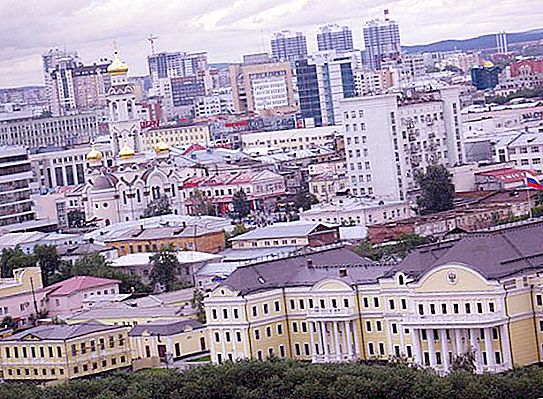
Regarding specifically the Sverdlovsk region, there was another factor that fueled the idea of creating a new currency. In the wake of the collapse of the Soviet Union, many regions of Russia wanted a greater level of independence, including economic. In particular, in the Sverdlovsk region there was an idea to create the Ural Republic as part of the Russian Federation. Own money was supposed to further contribute to both the economic independence of the region and the promotion of autonomist ideas among the local population. However strange it may seem now, even such a factor did not greatly concern the executive branch of the Kremlin.
Introduction initiative
The initiator of the introduction of the new currency was the local politician and businessman Anton Alekseevich Bakov, as well as a group of young people supporting him.
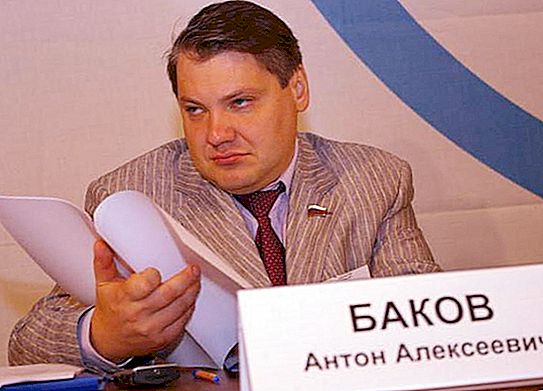
The name “Ural francs” was coined by analogy with the Swiss franc, which was considered the standard of stability and hardness of the currency.
In 1991, an appeal was sent to the Kremlin, in which the initiators asked for approval to issue a new currency. Oddly enough, the head of government, Yegor Gaidar, approved this initiative and sent a corresponding response to the region, and the State Bank and the Ministry of Finance obliged him not to obstruct the experiment.
How were the Ural francs printed? The banknote sketch was prepared by local architect Sofya Demidova. Direct printing was carried out in 1991 at the printing factory in the city of Perm "State Sign". The customer was Ural Market LLP.
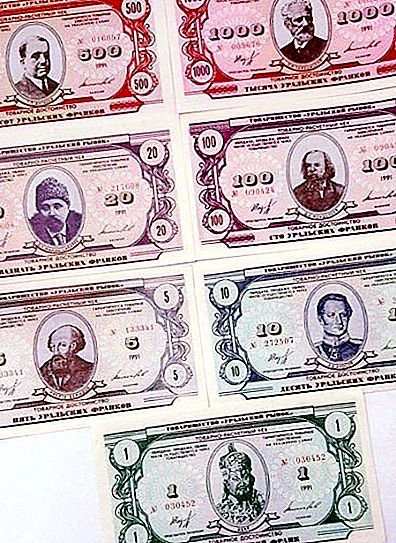
A total of 1930000 banknotes of various denominations were printed. The total amount was 56 million Ural francs. The cost of all the work done to create the Ural money was about 20 thousand dollars.
Appearance
Now let's find out what the Ural franc (1991) looked like.
Eight types of notes were issued in denominations of 1, 5, 10, 20, 50, 100, 500 and 1000 francs, each of which had a size of 80 mm in width and 145 mm in length. It should be noted that even the Russian official currency could not imagine such a variety of notes at that time. For example, the first banknote of 1000 rubles was issued only in 1992. Thus, the Ural francs were supposed to provide the population with the need for money of various denominations.
Printing was done on very high quality paper, and the decoration of banknotes can be attributed to this work of art. In addition, each bill had nine degrees of protection, which meant that there was a level of security against counterfeiting along with securities.
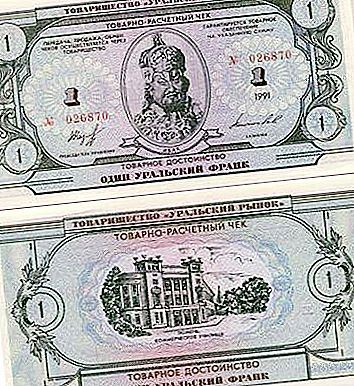
On the front side of the banknote was depicted one of the prominent natives of the Urals, who became famous in the political, cultural or scientific fields. For example, on a banknote of 1 franc denomination, the Siberian Khan Ibak was depicted. The reverse side of the Ural francs was decorated with one of the sights of the cities of the Urals and neighboring regions (Tyumen, Zlatoust, Nevyansk, Perm, Ufa, Yekaterinburg, Votkinsk, Tobolsk).
End of experiment
Despite such thorough work done to issue banknotes and the permission of the Russian government to use them, the experiment, in fact, ended without having begun.
After the banknotes were printed and delivered from Perm by helicopter to Sverdlovsk, they were transferred for storage to one of the branches of the local bank. The authorities of the Sverdlovsk region did not dare to introduce banknotes into circulation.
In 1993, the Constitution of the Russian Federation was adopted, which clearly stated that the only currency of the country can be only the Russian ruble, the issue of which is carried out exclusively by the Central Bank, and no one else. Thus, the use of local currencies was considered illegal. After that, there was no talk of introducing the Ural francs into circulation.
Second Life
Nevertheless, after some time, some of the printed banknotes still found application. In 1997, banknotes began to be used at a metallurgical plant in the city of Serov (Sverdlovsk Region) as a means of payment in a store and in canteens. This was due to the fact that Anton Bakov became the general director of this enterprise.
In total, 1 million banknotes with a face value of 1 to 50 francs were issued in-house circulation.
After local law enforcement agencies became interested in such a move, by order of the plant’s administration, the stamp “Food stamps” was applied to the banknotes. This step helped to avoid accusations of illegal release of money into circulation.
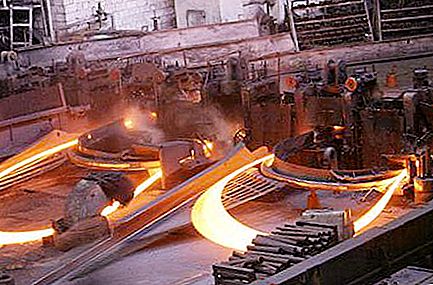
After Bakov was removed from the management of the enterprise in 2000, the new administration decided to abandon the circulation of francs as food stamps. After that, up to and including today, the Ural francs did not take part in the commodity-money circulation. Their history as a monetary unit has ended.
Fakes
Despite the fact that the Ural francs never became full-fledged money that had at least regional significance, nevertheless, the desire to sell notes as a souvenir gave rise to a variety of fakes. But not all Ural francs are fakes. How to distinguish real banknotes from fake banknotes?
First of all, you need to consider that only banknotes of 50 francs and less were put into circulation. Thus, only denominations of 1, 5, 10, 20 and 50 Ural francs in the hands of the population can be real. Banknotes of any other denomination - 100% fake.
People who are a little familiar with banking can also distinguish real banknotes from counterfeit ones by identifying degrees of protection, including watermarks.
There are also “Ural francs” with the stamp “Yekaterinburg Collectors Club”, but they have nothing to do with real banknotes issued in 1991 and are just a souvenir. The authenticity of francs with the stamps of the All-Russian Society of Persons with Disabilities, as well as some other organizations, is also in question.




